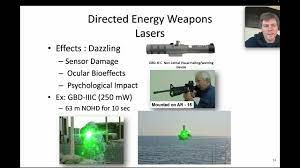Patent No. 5954630 FM theta-inducung audible sound, and method, device and recorded medium to generate the same
Patent No. 5954630
FM theta-inducung audible sound, and method, device and recorded medium to generate the same (Masaki, et al., Sep 21, 1999)
Abstract
An audible sound of modulated wave where a very low-frequency wave of about 20 hertz or lower is superposed on an audio low-frequency wave effectively stimulates Fm theta in human brain waves to improve attention and concentration during mental tasks when auditorily administered. The audible sound is also effective in stimulation of human alpha wave when the very low-frequency wave lies within the range of about 2-10 hertz. Such audible sound is artificially obtainable by generating an electric signal which contains such a modulated wave, and transducing it into audible sound wave.
Notes:
SUMMARY
OF THE INVENTION
In view of the foregoing, one object of this invention is to provide an audible
sound which enables artificial induction of Fm theta in human when auditorily
administered.
Another object of this invention is to provide a method which enables artificial
generation of such audible sound.
Further object of this invention is to provide a device which enables artificial
generation of such audible sound.
Still further object of this invention is to provide a recorded medium which
reproduceablly records such audible sound.
The present inventors studied various means which might solve these objects,
leading to the finding that Fm theta much more strongly and extensively appeared
in human when administered via the auditory sense with an audible sound containing
a modulated wave where a very low-frequency wave of about 20 hertz or lower
was superposed on an audio low-frequency wave. The present inventors further
studied various methods and devices which might enable artificial generation
of such audible sound, leading to the finding that it was easily obtainable
by amplitude-modulating an audio low-frequency with a very low-frequency wave
of about 20 hertz or lower, and subjecting to electroacoustic transduction the
obtained electric signal which contained a modulated wave where the very low-frequency
wave was superposed on the audio low-frequency wave.
Based on these novel findings, this invention provides an Fm theta-inducing
audible sound which contains a modulated wave where a very low-frequency wave
of about 20 hertz or lower is superposed on an audio low-frequency wave.
This invention also provides a method to generate such audible sound, which
comprises amplitude-modulating an audio low-frequency with a very low-frequency
wave of about 20 hertz or lower, and subjecting to electroacoustic transduction
the obtained electric signal which contains a modulated wave where very low-frequency
wave is superposed on the audio low-frequency wave.
Further this invention provides a device to induce Fm theta, which comprises
a modulated wave-generating circuitry to generate a modulated wave where a very
low-frequency wave of about 20 hertz or lower is superposed on an audio low-frequency
wave, and an electroacoustic transducer to transduce said modulated wave into
an audible sound, said electroacoustic transducer being connected with an output
terminal of said modulated wave-generating circuitry.
Still further this invention provides a recorded medium to induce Fm theta,
which bears a track of magnetically or optically recorded modulated wave where
a very low-frequency wave of about 20 hertz or lower is superposed on an audio
low-frequency wave, said recorded medium giving an audible sound containing
said modulated wave when reproduced.
The audible sound of this invention stimulates the appearance of Fm theta in
human brain waves when auditorily administered. In particular the audible sound
also stimulates the appearance of alpha wave when the very low-frequency lies
within the range of about 2-10 hertz.
The method and device of this invention are to artificially generate such audible
sound: Amplitude modulation of an audio low-frequency wave by a very low-frequency
wave of about 20 hertz or lower gives an electric signal containing a modulated
wave where the very low-frequency wave is superposed on the audio low-frequency
wave. Electroacoustic transduction of this electric signal gives an audible
sound which contains the above mentioned modulated wave. The recorded medium
of this invention gives an audible sound which contains a modulated wave where
a very low-frequency wave is superposed on an audio low-frequency wave when
reproduced with appropriate reproducing devices.
--------------------------------------
As described above, Fm theta is a
good criterion for attention and concentration, therefore the results in this
Experiment suggest that when used in mental tasks in general, the audible sound
of this invention would improve the users' attention and concentration and keep
their efficiency and accuracy during the tasks in an elevated level. The progressing
rates (%) for the Kraepelin test also confirmed this: As seen in Table 1, the
progressing rates (%) during task were significantly enhanced when the volunteers
were loaded with it while listening to the audible sound of this invention.
The audible sound of this invention stimulates the appearance of Fm theta in
subjects' brain waves when they listen to it. The audible sound also stimulates
the appearance of alpha wave when the very low-frequency wave lies in the range
of about 2-10 hertz. Thus the audible sound of this invention improves and stimulates
in subjects desirable states in their mind and body, i.e. attention, concentration
and relaxation, to which Fm theta and alpha wave are relevant when they listen
to it.
Because of these, the audible sound of this invention is effective in relaxation
of mind and body, improvement of creativity and efficiency in studies and relief
or elimination of reduction in thinking power, concentration, working motivation,
insomnia, fatigue, obsession, phobia and uncompleteness, for example, due to
mental diseases such as neurosis, psychasthenia, psychosomatic disease, manic-depressive
psychosis and chronic alcohol dependence and stresses including technostresses
which are caused by electromagnetic waves from television set, video display,
OA instrument and igniter for automobiles, in addition to improvement of attention
and concentration. Thus the audible sound of this invention is useful as means
to improve efficiency, accuracy, learning ability, researching ability and creativity
in mental tasks and also to improve concentration during playing sports at home,
working place, stadium, school, "gakushu-juku (a school for private tutoring
after regular school hours)", training place, research institution and atorie,
as well as means to prevent and treat a variety of mental diseases at working
place, clinic, hospital and sanatorium. Dependently on subjects, the audible
sound of this invention may stimulate the appearance of Fm theta with very short-term
dose or even with no dose when subjects have listened to it over an extended
time period. The audible sound of this invention is useful as mental training
means for such subjects. Further the audible sound, which is useful as described
above, is artificially and readily obtainable by the method of this invention.
The audible sound, which is very useful as described above, is easily obtainable
by the method, device and recorded medium of this invention.
As described above, this invention would be greatly contributive to the art
and very significant.





Comments